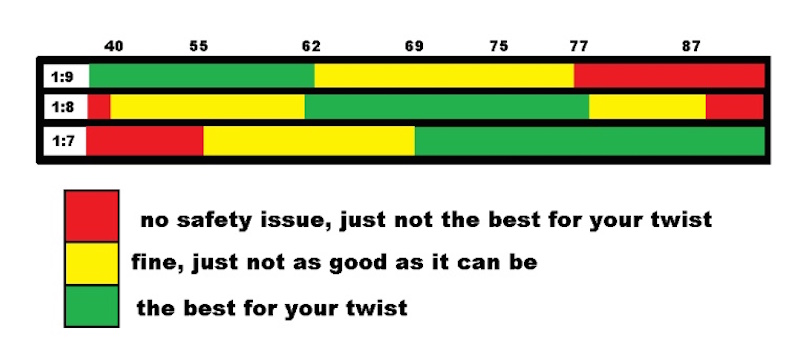16.5" bbl, 1-9 twist.
Bought my kid this rifle.
Put about 40 rounds of Winchester factory thru it before I started loading for it. Accuracy was poor... 2.5" groups.
I have been through about 100 handholds and I'm struggling to get this rifle to shoot sub moa.
The first 50 cases I loaded I tried 5 different bullets over smaller charges of H335.
Barnes 55gr ttsx. Shot 1.25"... .050" off
Barnes 62gr ttsx Shot 1.5"... .050 off
Sierra 55gr SBT Shot 1.4"... .010 off
Swift 62gr scirocco II Shot deplorable... 3+".. .010 off
Nosler 60gr partition Also shot bad... 2.5".. .010 off
The Barnes 55gr ttsx looks promising, and truth be told it was the bullet I wanted to use anyway. I started seating this bullet at .050 off and haven't tried any other seating depths.
Since none of the above loads proved to be ringers, I figured maybe the barrel just needed more rounds through it. So, I loaded up another 50 rounds using the same bullets as listed above. This time I used heavier charges of H335, and I was actually getting some decent velocity that I am happy with. The bullets grouped almost identical to the first 50, with the Barnes 55gr ttsx winning again.
So, I want to continue developing the 55gr ttsx load, but I have a few questions.
1) I have way to many powders on hand. Should I try the 55gr ttsx with a different powder and see if I can squeeze another 1/2" out of it? 25gr of H335 is giving me about 2975fps out of this short barrel. No overpressure signs.
2) Seating depth. Should I stick with the H335 and play with seating depths?
Any input would be appreciated!
Bought my kid this rifle.
Put about 40 rounds of Winchester factory thru it before I started loading for it. Accuracy was poor... 2.5" groups.
I have been through about 100 handholds and I'm struggling to get this rifle to shoot sub moa.
The first 50 cases I loaded I tried 5 different bullets over smaller charges of H335.
Barnes 55gr ttsx. Shot 1.25"... .050" off
Barnes 62gr ttsx Shot 1.5"... .050 off
Sierra 55gr SBT Shot 1.4"... .010 off
Swift 62gr scirocco II Shot deplorable... 3+".. .010 off
Nosler 60gr partition Also shot bad... 2.5".. .010 off
The Barnes 55gr ttsx looks promising, and truth be told it was the bullet I wanted to use anyway. I started seating this bullet at .050 off and haven't tried any other seating depths.
Since none of the above loads proved to be ringers, I figured maybe the barrel just needed more rounds through it. So, I loaded up another 50 rounds using the same bullets as listed above. This time I used heavier charges of H335, and I was actually getting some decent velocity that I am happy with. The bullets grouped almost identical to the first 50, with the Barnes 55gr ttsx winning again.
So, I want to continue developing the 55gr ttsx load, but I have a few questions.
1) I have way to many powders on hand. Should I try the 55gr ttsx with a different powder and see if I can squeeze another 1/2" out of it? 25gr of H335 is giving me about 2975fps out of this short barrel. No overpressure signs.
2) Seating depth. Should I stick with the H335 and play with seating depths?
Any input would be appreciated!
Last edited:

